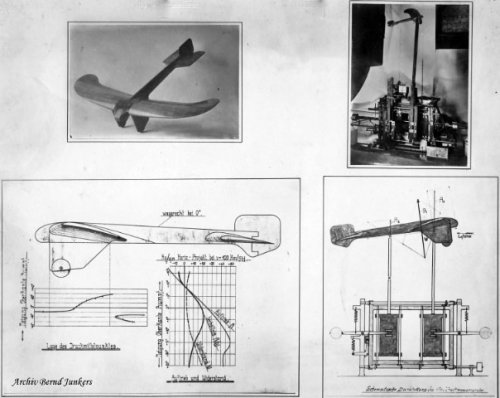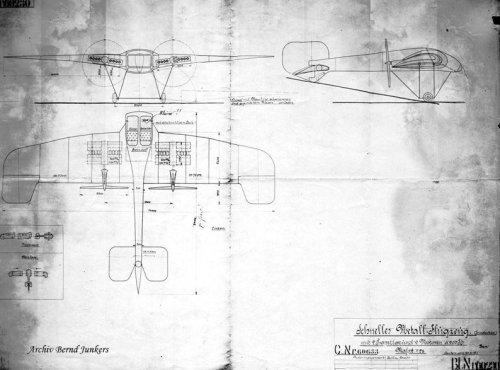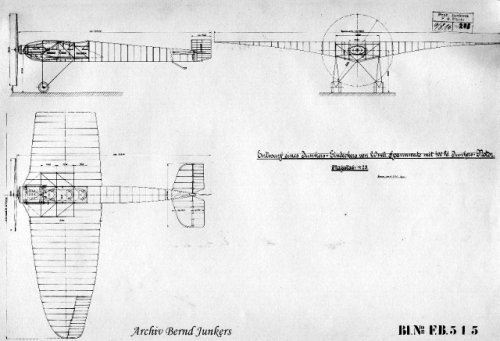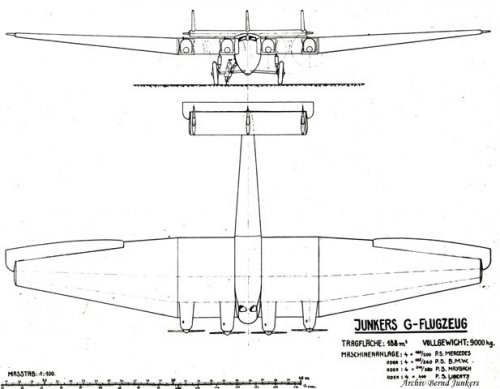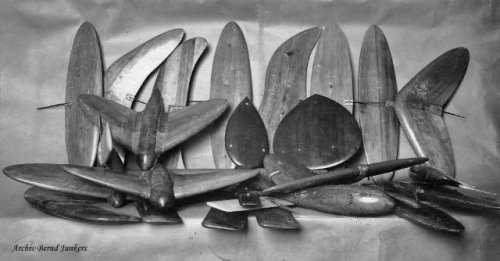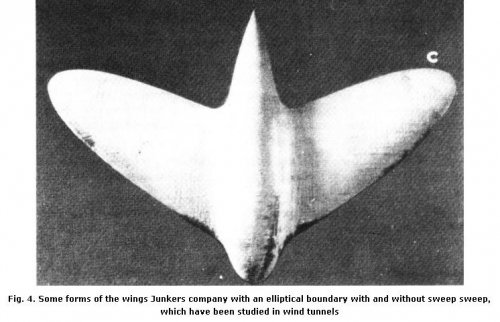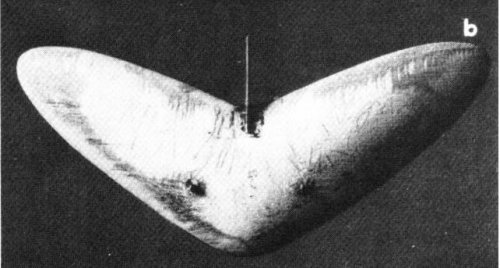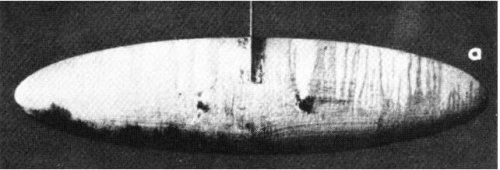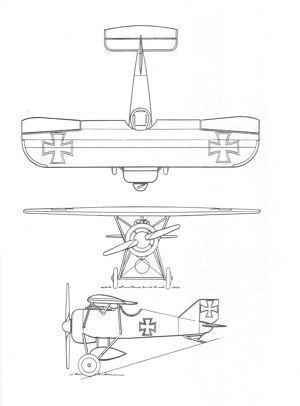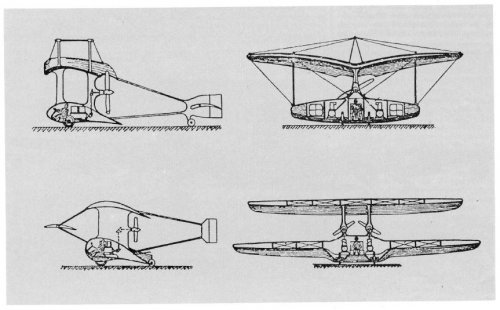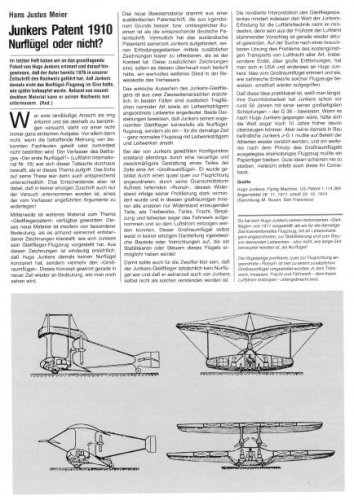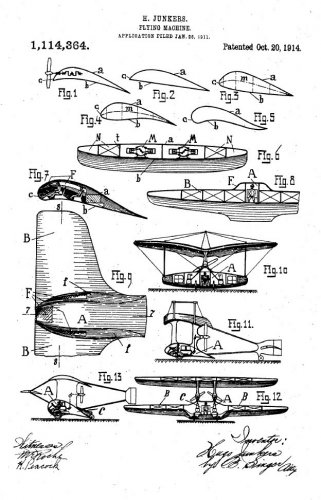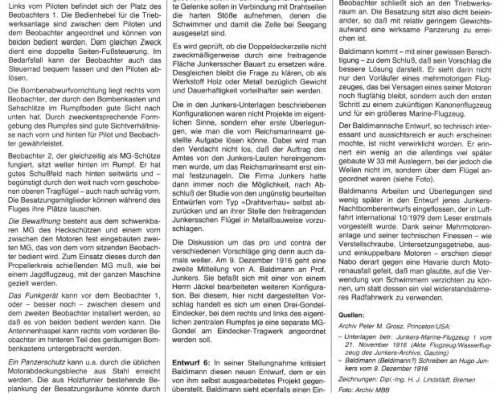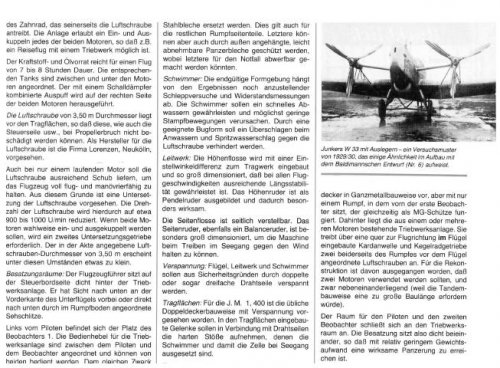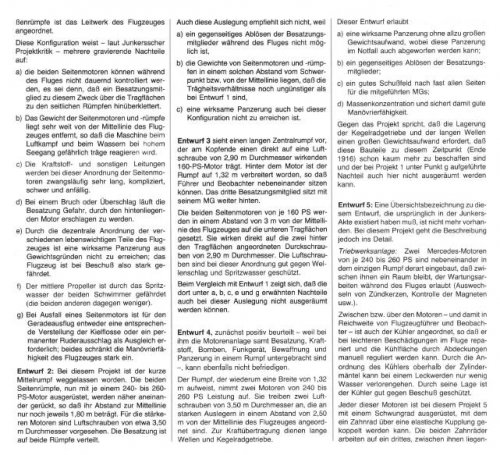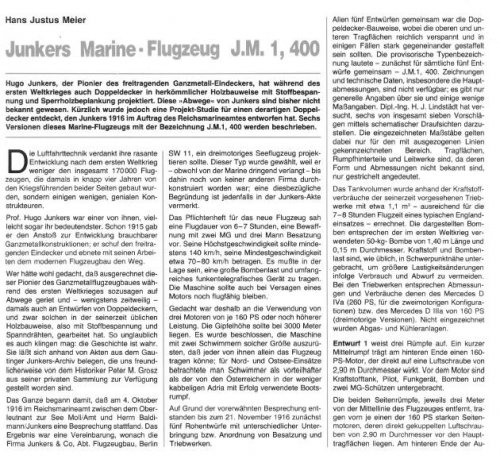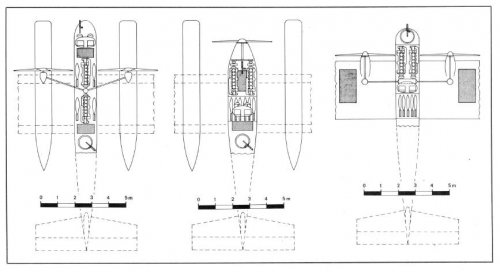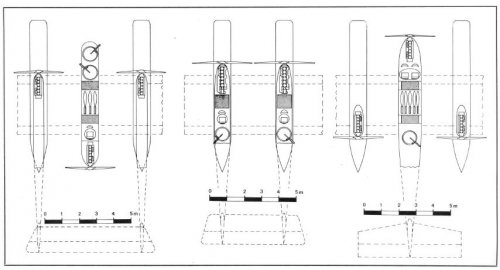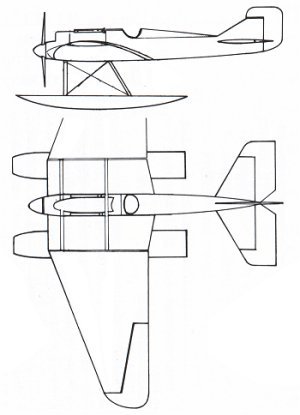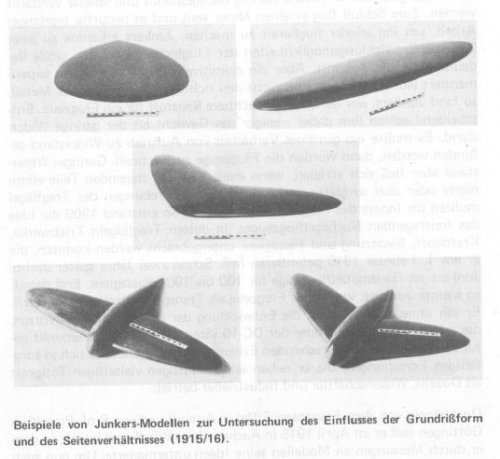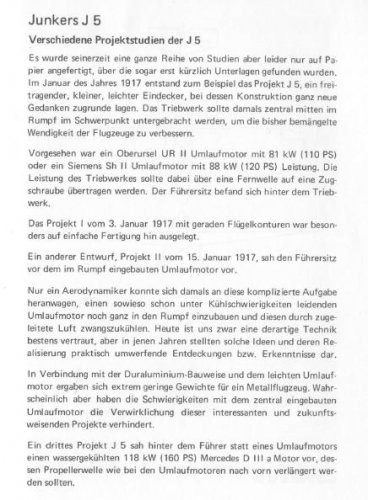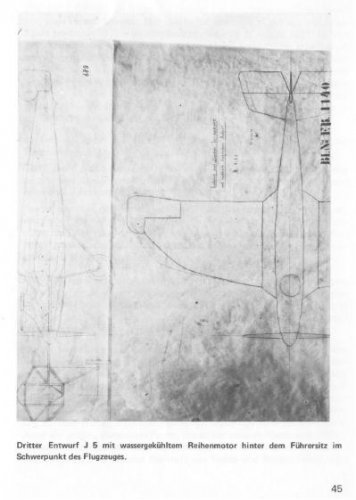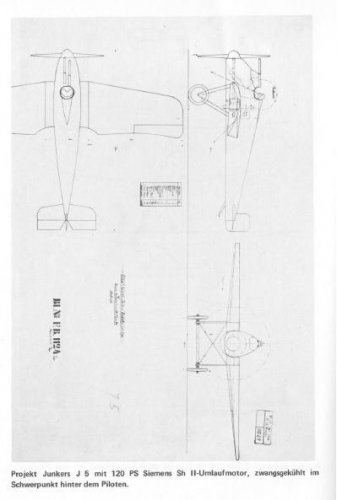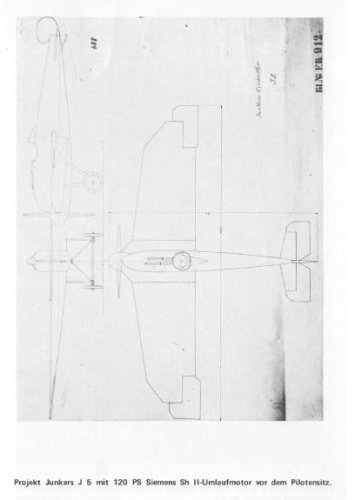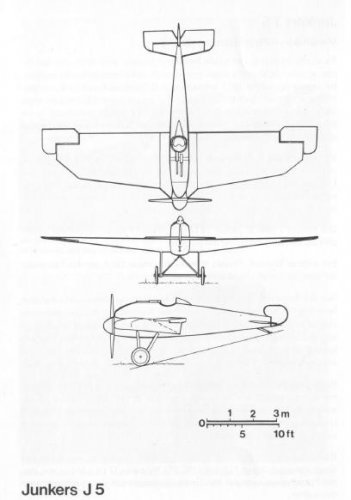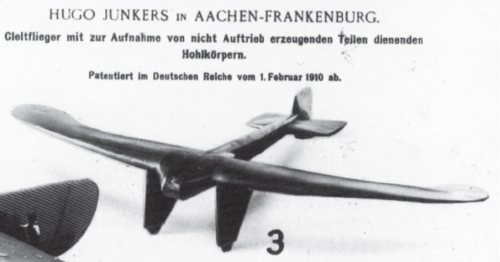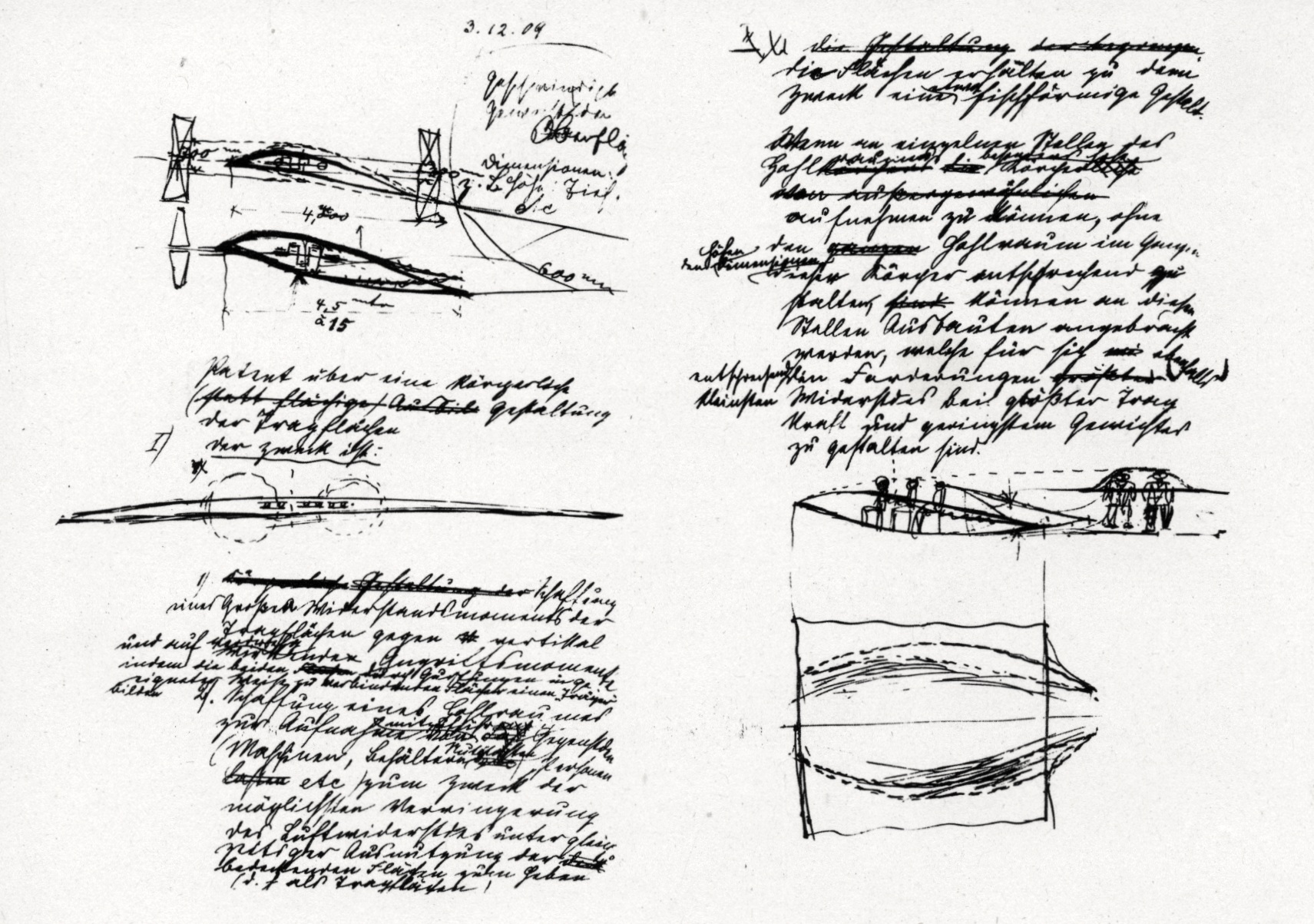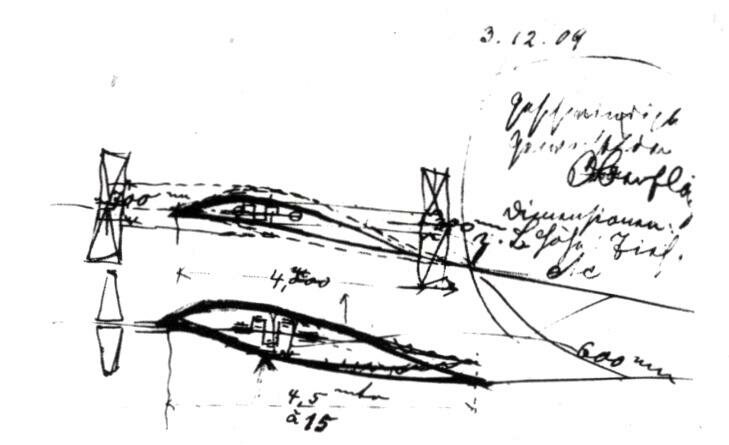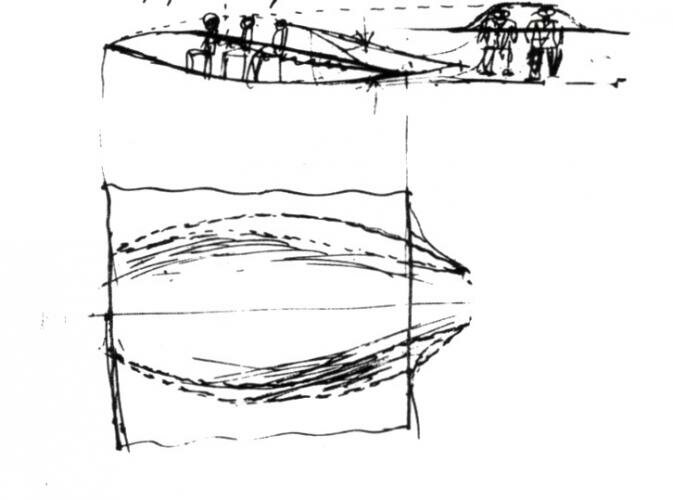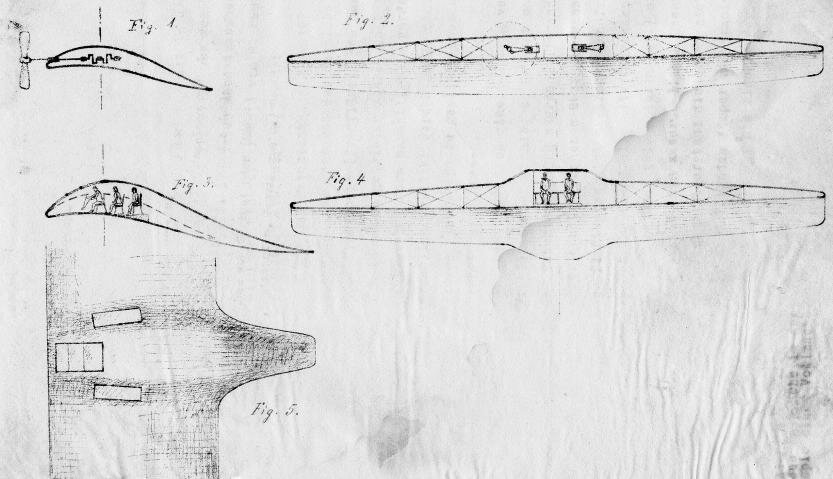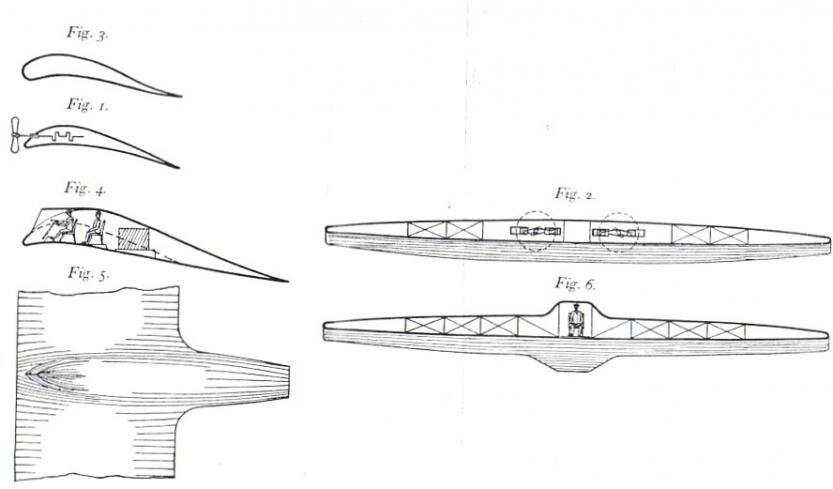As requested by Wurger, here are some more details from Gunter Schmitt's book on Junkers project types:
Junkers Project 1 - Junkers J3 - first light metal aircraft
( see also http://hugojunkers.pytalhost.com/ju_j3_a1.htm )
Design was under the auspices of Dr Mader who was chief engineer at Junkers. Although production was started, it was never completed. The J3 was a single-seat low wing monoplane which pioneered the use duralumin corrugated thin sheet during testing of parts.
Work was stopped because of the excessive expense of the technical research and the lack of commercial interest. Work shifted onto the J4 design instead.
Wing Span: 11.45 m
Length: 6.67 m
Height: 3.1 m
Engine: 14 cylinder Oberursel U III (113.9 kW / 155 hp))
------------------------------------------------------------------------------
Junkers Project 2 - Junkers J5 - small light , low-wing cantilever monoplane in three planned versions designed but never built .
( See also http://hugojunkers.pytalhost.com/ju_j5_a1.htm )
In early 1917 work started a study into a small, low-wing cantilever monoplane. Three versions were planned each with differing wings forms and control services.
For the first variant, the powerplant was to be installed in the fuselage forward of the pilot being fixed to the propeller by a connecting rod.
In the second and third versions, the engine was behind the pilot with a lengthened propeller shaft running through the fuselage. In this version, the wing contours were rounded
J5 (version 1)
Drawing Date: 3rd January 1917
Engine: Oberursel UR II (81 kW / 110 hp) rotary engine or Siemens Sh II (88.2 kW / 120 hp) rotary engine
Wing Span: 11.8 m
Length: 6.75 m
Height: 2.7 m
Wing Area: 12.00 sq m
J5 (version 2)
Drawing Date: 18th January 1917
Engine: Siemens Sh II (88.2kW / 120 hp) rotary engine
Wing Span: 11.8 m
Length: 8.0 m
Height: 2.8 m
Wing Area: 20.00 sq m
J5 (version 3)
Engine: Mercedes D IIIa (117.6 kW / 160 hp) water-cooled rotary engine
No data for this third option.
------------------------------------------------------------------------------
Junkers Project 3 - Junkers J6 - high-wing cantilever monoplane from August 1917. At the wars end, the prototype was half-completed at Dessau.
( See also http://hugojunkers.pytalhost.com/ju_j12_a1.htm )
Design started in August 1917 on this very small all-metal high-wing parasol monoplane. Its small size compromised its manoeuvrability. The engine was found to be far too heavy when located behind the pilot.
The high elevator and fin was an attempt to improve handling. The aircraft was fitted with a 2.8 m diameter airscrew thanks to a high undercarriage. A streamline fuel tank was located in the slender fuselage. When the armistice was signed the prototype was 50% complete in the Junkers workshop in Dessau.
Engine: Siemens Sh III (117.6 kW / 160 hp) engine
Wing Span: 8.0 m
Length: 5.6 m
Height: 2.62 m
Wing Area: 12.00 sq m
Maximum Speed: 190 km/h
------------------------------------------------------------------------------
Junkers Project 4 - Junkers R1 - four engine giant monoplane heavy bomber project in two versions, both low-wing.
Junkers Project 5 - Junkers R2 - twin engine giant monoplane heavy bomber project.
Junkers Project 6 - Junkers R3 - four engine giant flying boat project.
( See also http://www.secretprojects.co.uk/forum/index.php/topic,3253.msg177951.html#msg177951 )
------------------------------------------------------------------------------
Source:
Hugo Junkers and his Aircraft (Gunter Schmitt) Transpress (GDR) 1988 ISBN 3344003038

